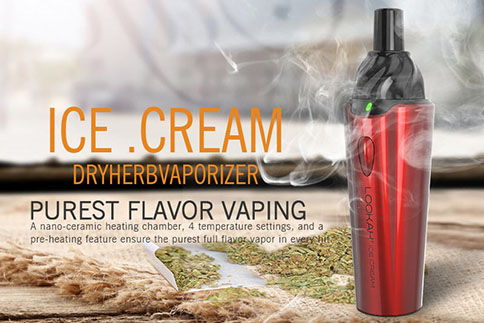
Dry Herbal Vapor Temperatures – The Ultimate Guide
We are all familiar with the old, tried and tested methods of smoking marijuana like bongs. Water pipes, Chillums, blunts, and joints, but we’re not all aware of the benefits of vaping.
Only in the last few years, as legalization and acceptance have increased, has the popularity of vaping increased tremendously.
Thanks to scientific research and laboratory testing, the benefits of vaping are finally beginning to show up more frequently.
It’s no surprise that the vape market is growing so rapidly given the evidence for vaping versus smoking.
By removing the burn from the process, we can prevent various carcinogens and toxins from entering the body.
Carcinogens are toxins that are directly related to the growth of cancer cells. Marijuana smoke contains large amounts of these carcinogens, which are inevitable if inhaled.
Instead of burning to release the active ingredients in cannabis, vaping brings the material to a boil, creating vapors that are rich in terpenes and cannabinoids. With the increasing acceptance of cannabis as modern medicine, the healthiest way to preserve its active ingredients is being found.
While not entirely healthy, vaping is certainly an alternative to smoking.
When we smoke, we have little control over what happens after the weed is lit. With vaping, you can change the temperature with the push of a button and have much better control.
This article looks at vaping temperatures, techniques, and vaporizers to ensure you get the best results from your vaping experience.
Convection or conductivity
Convection and conduction are the two main heating methods used in vapes.
The convection heats the air in the compartment the marijuana is in, essentially creating an oven effect.
The conduction occurs through direct contact with the ground cannabis. It is known that convection can create more flavor and conduction can create the thicker clouds we crave.
There are some vapors on the market that claim to mix the two forms of heating as a hybrid vaporizer. These dry herbal vapors Usually use one of the most prevalent. However, such vapes with their hybrid method raise the standards for high-end vaping experiences.
Dry herbal steam temperatures
Each steam temperature leads to a different result.
Lower temperatures focus on maintaining flavor, while higher temperatures create thicker clouds.
It is up to you to choose which happy medium you prefer.
Higher temperatures can produce harsh, dry, and hot fumes, while lower temperatures cannot contain steam. Most people find that a medium to high temperature (e.g. 185 ° C) achieves a good balance which ensures that all of the active ingredients are completely evaporated without ruining the taste.
Marijuana contains many active ingredients that vaporize at different temperatures.
THC – 157 ℃
CBD – 160-180 ℃
Delta – 8 – THC – 175 ℃
CBN -185 ℃
CBC – 220 ℃
THCV – 220 ℃
Tips and techniques for vaping
For best results, consider the following factors. The kind of Evaporator You use how you use it and how finely ground the herb is.
Try to use longer tokens to allow the devices to maintain their set temperature. This also counteracts any tensile strength, which means that the taste and steam consistency are retained.
To get good vapor, most dry herbal vaporizers require a reasonably fine grind to ensure even airflow and heating. Be careful not to overpack the chamber.
Before using it, do some research on your vaporizer and run some tests to find the perfect way to package it.
There are many reviews and tutorial videos on the web so make sure to use them.
To get the most out of your vapor, keeping it clean is essential. After each smoking session, take some time to purify and maintain your vapor.
Conclusion
Everyone will have their own preferences and, unlike smoking, a joint or a chillum, will find the most convenient way to get the most out of yours Vaping can tell a little test.
Personally, I found 185 ° C to be perfect for what I wanted to achieve, flavor and thick vapor. Don’t be afraid to adjust the various variables like the temperature and grind of your herb to find the method that suits you best.

Post a comment: